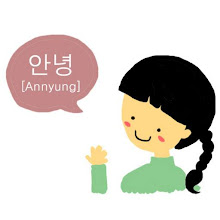가: 이 영화가 무척 재미있다니까 소피아 씨에게 같이 보러 가자고 하세요.
가: Ask Sophia to see this movie together since it is so interesting.
나: 안 그래도 소피아 씨에게 같이 보러 가자고 물어봤었어요. 그런데 같이 보자니까 이런 영화는 안 좋아 한다고 하더 라고요.
나: In fact, I’ve already asked her to go to see it. But when I did (so), she said she doesn’t like this kind of movie.
가: 어, 나한테는 이 영화 보고 싶다고 했었는데.
가: Oh, but she told me that she wanted to see it.
나: 그래요? 소피아 씨는 여양 씨와 같이 보고 싶은가 보네요.
나: Really? It seems like Sophia wants to see it together with you, Yeoyang.
This expression is the abbreviated form of (느)ㄴ다고 하니까 and is used to indicate the speaker’s response or view with respect to his or her own belief, to a statement heard from someone else, or to some known fact, reason, or basis for some belief. The response indicated by this expression can include actions, verbal responses, and emotional responses.

형용사의 의문형은 ‘-으냐니까’와 ‘냐니까’ 둘 다 가능하고 동사의 의문형은 ‘느냐니까’와 ‘냐니까’ 둘 다 모두 가능합니다.
• 방학 때 지중해로 크루즈 여행을 간다니까 모두들 부러워하더라고요.
When I mentioned that I was going on a Mediterranean Sea cmise during the school break, everyone was envious.
• 영국에서 일하게 되었다니까 다들 휴가 내서 놀러 간다고 하더군요.
When I said that I got a job in the UK, everyone said they were going to take a vacation to go to visit me.
• 친구가 이 책을 읽어 보라니까 읽긴 했는데 무슨 말인지 하나도 모르겠어요.
I read this book since my friend recommended that I read it, but I didn’t understand a word of it.
This expression requires different subjects in the preceding and following clauses.
• 안느 씨가 운동을 하고 싶다니까 윤호 씨가 요가를 해 보라고 했어요.
• 내가 중국에서 공부를 했다니까 지연 씨가 중국어를 해 보라고 했어요.
>> You can click on the title of each grammar below to see other grammars which also express 'Citations and Quotations'
가: Ask Sophia to see this movie together since it is so interesting.
나: 안 그래도 소피아 씨에게 같이 보러 가자고 물어봤었어요. 그런데 같이 보자니까 이런 영화는 안 좋아 한다고 하더 라고요.
나: In fact, I’ve already asked her to go to see it. But when I did (so), she said she doesn’t like this kind of movie.
가: 어, 나한테는 이 영화 보고 싶다고 했었는데.
가: Oh, but she told me that she wanted to see it.
나: 그래요? 소피아 씨는 여양 씨와 같이 보고 싶은가 보네요.
나: Really? It seems like Sophia wants to see it together with you, Yeoyang.
This expression is the abbreviated form of (느)ㄴ다고 하니까 and is used to indicate the speaker’s response or view with respect to his or her own belief, to a statement heard from someone else, or to some known fact, reason, or basis for some belief. The response indicated by this expression can include actions, verbal responses, and emotional responses.

형용사의 의문형은 ‘-으냐니까’와 ‘냐니까’ 둘 다 가능하고 동사의 의문형은 ‘느냐니까’와 ‘냐니까’ 둘 다 모두 가능합니다.
• 방학 때 지중해로 크루즈 여행을 간다니까 모두들 부러워하더라고요.
When I mentioned that I was going on a Mediterranean Sea cmise during the school break, everyone was envious.
• 영국에서 일하게 되었다니까 다들 휴가 내서 놀러 간다고 하더군요.
When I said that I got a job in the UK, everyone said they were going to take a vacation to go to visit me.
• 친구가 이 책을 읽어 보라니까 읽긴 했는데 무슨 말인지 하나도 모르겠어요.
I read this book since my friend recommended that I read it, but I didn’t understand a word of it.
This expression requires different subjects in the preceding and following clauses.
• 안느 씨가 운동을 하고 싶다니까 윤호 씨가 요가를 해 보라고 했어요.
• 내가 중국에서 공부를 했다니까 지연 씨가 중국어를 해 보라고 했어요.
>> You can click on the title of each grammar below to see other grammars which also express 'Citations and Quotations'
1. 보고
2. -(느)ㄴ다니까
3. -(느)ㄴ다면서
4. 에 의하면
>> Full of 'Korean grammar in use - Advanced': Click here
>> Full of 'Korean grammar in use - Intermediate': Click here
2. -(느)ㄴ다니까
3. -(느)ㄴ다면서
4. 에 의하면
>> Full of 'Korean grammar in use - Advanced': Click here
>> Full of 'Korean grammar in use - Intermediate': Click here




.jpg)





0 comments: